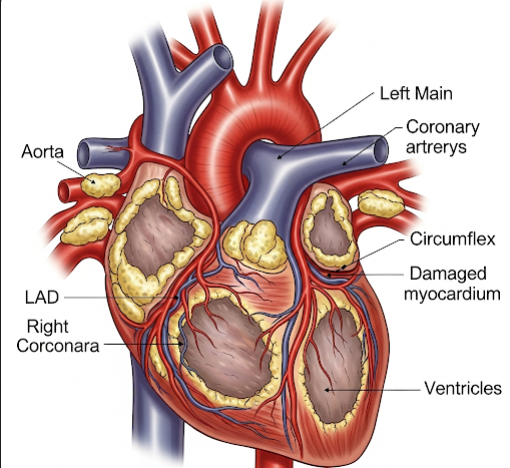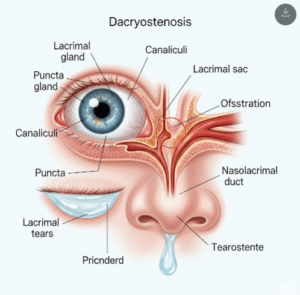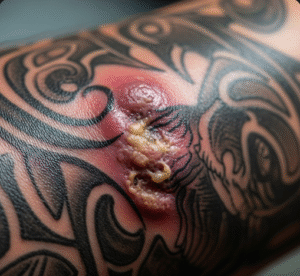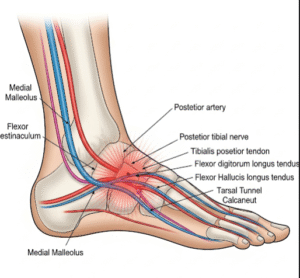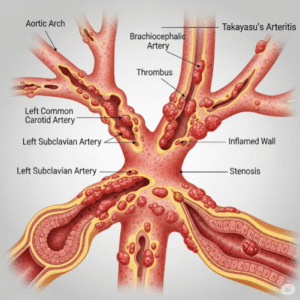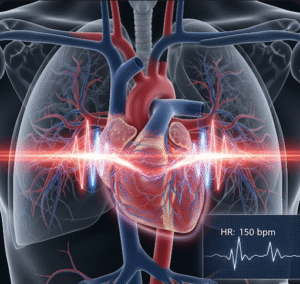Overview
Ischaemic Heart Disease (IHD), also known as coronary artery disease (CAD), is a condition where the heart muscle receives insufficient blood supply due to narrowing or blockage of the coronary arteries. This is usually caused by atherosclerosis — the buildup of plaque composed of cholesterol, fatty substances, and other materials. IHD is one of the leading causes of morbidity and mortality worldwide, including in Korea. Advances in diagnostic tools, interventional cardiology, and preventive care in Korean hospitals have made it possible to manage and treat IHD effectively, significantly improving patient outcomes.
What is Ischaemic Heart Disease?
Ischaemic Heart Disease occurs when reduced blood flow deprives the heart muscle (myocardium) of oxygen and nutrients, leading to chest pain (angina) or, in severe cases, a heart attack (myocardial infarction). The reduction in blood supply is often progressive, meaning symptoms may worsen over time without proper intervention.
Symptoms
- Chest pain or discomfort (angina), often triggered by physical activity or stress
- Pain radiating to the arm, neck, jaw, or back
- Shortness of breath
- Fatigue during exertion
- Sweating and dizziness
- Nausea in some cases
- Silent ischemia (no symptoms) in certain individuals, especially diabetics
Causes
- Atherosclerosis: Plaque buildup in coronary arteries
- Blood clots: Sudden blockage due to clot formation over a ruptured plaque
- Coronary artery spasm: Temporary narrowing of arteries
- Reduced oxygen supply: Due to severe anemia or low blood pressure
Risk Factors
- Age (risk increases with age)
- Male gender (though post-menopausal women are also at high risk)
- Family history of heart disease
- High blood pressure (hypertension)
- High cholesterol levels
- Smoking
- Diabetes
- Obesity and physical inactivity
- Unhealthy diet high in saturated fats, trans fats, and salt
- Chronic stress
Complications
- Myocardial infarction (heart attack)
- Heart failure due to weakened heart muscle
- Arrhythmias (irregular heartbeats)
- Sudden cardiac arrest
- Reduced quality of life due to recurrent chest pain
Prevention
- Maintain a healthy diet rich in fruits, vegetables, and whole grains
- Exercise regularly (at least 150 minutes/week of moderate activity)
- Avoid smoking and excessive alcohol intake
- Manage underlying conditions such as diabetes, high blood pressure, and high cholesterol
- Stress management techniques like yoga or meditation
- Regular medical check-ups and heart screenings
Treatment Options in Korea
Diagnosis
- Electrocardiogram (ECG)
- Echocardiogram
- Stress testing
- Coronary angiography
- CT coronary angiogram
- Blood tests for cardiac markers
Medical Treatments
- Antiplatelet drugs (aspirin, clopidogrel) to prevent clots
- Statins to lower cholesterol
- Beta-blockers to reduce heart workload
- ACE inhibitors or ARBs for blood pressure and heart protection
- Nitrates to relieve angina
Surgical or Advanced Therapies
- Percutaneous Coronary Intervention (PCI): Angioplasty with stent placement to open blocked arteries
- Coronary Artery Bypass Grafting (CABG): Surgical creation of a bypass around blocked arteries
- Minimally invasive heart surgery options in specialized Korean cardiac centers
Rehabilitation and Support
- Cardiac rehabilitation programs offered in Korean hospitals
- Lifestyle modification counseling
- Nutritional guidance and supervised exercise programs
Top Hospitals or Clinics in Korea
- Asan Medical Center – Leading in advanced cardiac surgery and interventional cardiology
- Seoul National University Hospital – State-of-the-art diagnostic and treatment facilities
- Samsung Medical Center – Specializes in complex coronary artery bypass procedures
- Yonsei Severance Hospital – Comprehensive heart disease care and rehabilitation programs

